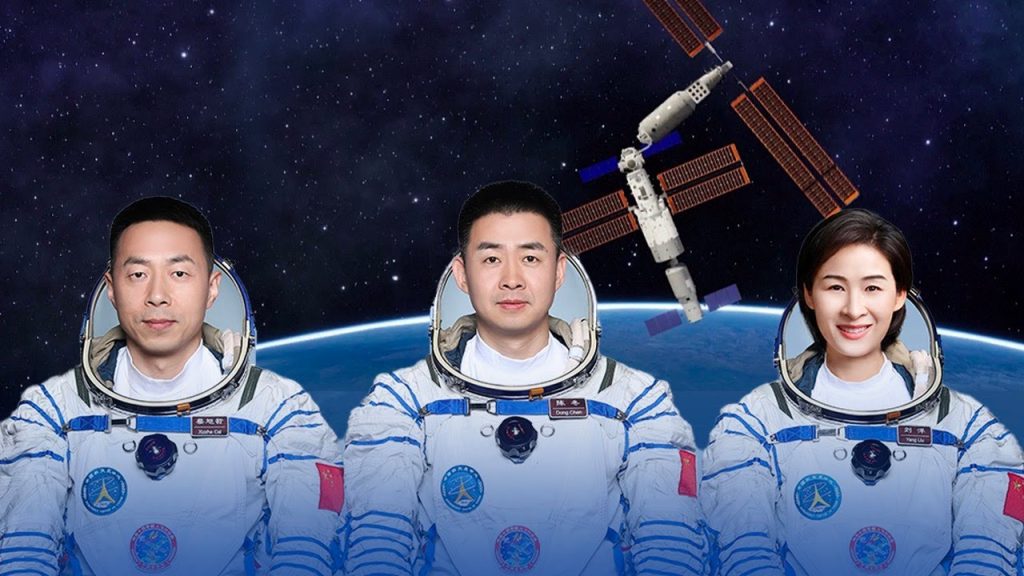The crew of China’s Shenzhou-15 mission onboard the Tiangong space station is currently setting up scientific payloads in the Mengtian module of the station. The China Manned Space Agency (CMS) has been broadcasting video footage of the meticulous work the crew is doing at present as part of its ongoing education.
Education from space has been a crucial part of the CMS for the past ten-odd years. In 2013, while doing his first spacewalks aboard the Tiangong 1 space station, Wang Yaping – also known in China as Goddess II, being the second female taikonaut – delivered her first lecture to 60 million Chinese school children. Since then, the People’s Liberation Army taikonauts have undertaken numerous classes from the Tiangong space stations, especially for school students – which go by the name of Tiangong Classrooms.
The Shenzhou-13 crew conducted the first of such classrooms in December 2021, with the main classroom being the China Science and Technology Museum in Beijing. Several smaller ‘branch’ classrooms were held in Sichuan, Wenchuan and Guangxi provinces. The classroom taught simple high school physics, chemistry and biology science lessons. Later in April 2022, the Chinese Embassy in Washington DC organized a Tiangong classroom for American students. The unique feature of this classroom was the recorded message delivered by SpaceX’s Elon Musk. In October 2022, the crew of Shenzhou-14 conducted a similar class for students in China. With the Shenzhou-15 crew finishing the Mengtian module’s laboratory set-up, another classroom could be on the anvil.
These classrooms have a purpose. They are held to motivate students to pursue careers in space and STEM, a necessity for China to maintain the technology hegemony the CCP is aiming for. While broadly, the lectures aim to keep a positive perception of China’s space aspirations. Education is considered sanctimonious in China, and the Tiangong classrooms have a special place among the aspirational society of China. However, the classrooms could have broader ramifications.
The CMS is preparing to train and take onboard taikonauts from partner countries who have expressed interest in working on the Tiangong space station. The condition placed before the foreign taikonauts is to learn to operate the Tiangong and its modules and payloads and to converse exclusively in the Chinese language. The CMS has explicitly taken the stance that the International Space Station’s operating language is English, whereas that of the Chinese space station is Chinese.
There are lessons to be learnt for India, especially now that it is getting clearer that Gaganyaan is the precursor to an Indian space station. Indian students would be thrilled to not only take lessons from Indian vyomanauts but also see them operationally converse in a pan-national Indian language.





